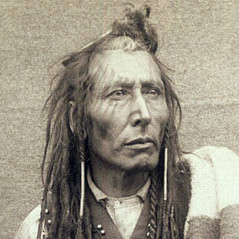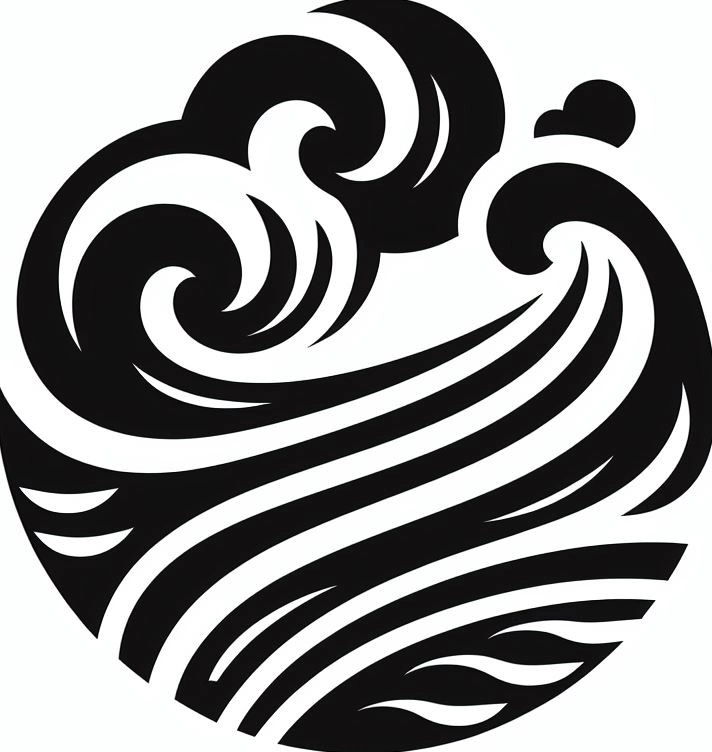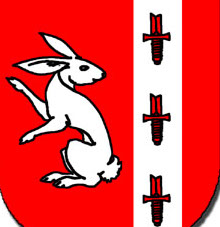May I present to you, how to measure like a Brit

It’s great fun especially when you’re trying to work out how fuel efficient your car has been when your tank and fuel pump is in litres and the fuel efficiency is in miles per gallon.
Oh and you’ll have a jolly time following a recipe from more than 20 years ago trying to remember what the hell “Gas Mark 4” is in centigrade for fan or convection ovens.
Oh and my personal favourite for the industry I’m in: when designing a PCB your component sizes will use imperial codes, your wire diameters will be in AWG, your track widths and PCB dimensions will be in millimetres, but your copper thicknesses will be in ounces despite the final weight for the assembly will be in grams.
Bear in mind that the gallon we use is different from the US gallon, too:
- a UK gallon is eight (imperial) pints of 20 fluid ounces, so 4.54 litres
- a US gallon is 231 cubic inches, so 3.79 litres
The reason that I thought American car fuel economy was so terrible as a child is partly because UK mpg is +20% on US mpg for the same car on the same fuel. But also, because American car fuel economy is so terrible.
Don’t forget that the UK fluid ounces are different (slightly smaller) than the US fluid ounces as well
20 UK fl oz = 19.21 US fl oz
Holy crap, that’s why craft beer tall cans are different from 16oz tall boys here in the states. I’d always wondered why the were 19.2.
Brits also think our gasoline is crappier because we use a different calculation for octane, (R+M)/2 instead of RON.
So 90 RON is actually 85.9 in the US. And in most of the country the minimum is 87 (R+M)/2.
93 Premium is like 98 RON. And race gas 100 is like 105 RON.
To be fair though, your petrol is still insanely cheap compared to the UK and Europe.
US freedom is made from cheap gas.
I thought it was the right to keep a bear’s forelegs
God status = blessed 🦅🇺🇲
It’s weirder when you look at Canada vs USA. Mileage here is usually written L/100km, but back in the day the cars were exactly the same but the mileage in Canada was better because the the US gallon is only ~83% the size of a proper gallon.
Canada has a similar chart, with some fun modifications. For example, distance could be feet/inches, millimeters/meters/kilometers, or minutes/hours, depending on what you are measuring.
As an Indigenous Canadian … when someone asks me where something, someone, some town, some location, the sun or a celestial object is located … I turn my head and point with my lips.
And my distance measurements are usually answered first by asking ‘why?’ … and if they give an acceptable response, I’ll tell them the distance is either … ‘not far’ … ‘far’ … or ‘very far’
I turn my head and point with my lips.
TIL that this is a thing in Indonesia.
I still have some doubts. https://m.youtube.com/watch?v=BeIUsyoAoLsI’ve also learnt to point with my lips. It’s pretty handy.
Thank you for posting this. So sick and tired of people saying that GB switched to Metric.
This! That stupid map that just shows the US and Burma always annoys me. The US customary system includes Metric units. Canada and England still use Imperial/Customary. And “Metric” Is actually like 5 different systems with similar features like ANSI/ISO, KMS/CGS, and the three different pressure measurements.
Natural units >>> Metric I want an alternative to Metric that uses base 12 units instead.
I want an alternative to Metric that uses base 12 units instead.
Right?! I have been saying that for years! It really pisses me off that we evolved with 5 digits on each hand instead of 6. It’s clear evidence against the the idea of intelligent design.
Cont on finger sections or knuckles, like some cultures do. Gives you 12 on one hand, using the thumb to count.
Or 16 if you choose your reference points right.
But we still have a number system where 10 is the sum of 5+5.
I want a number system where 10 is the sum of 6+6, and 12 is the sum of 7+7. A number system with two more single-digit numbers: one representing the sum of 6 and 4 as a single digit; and another representing the sum of 6 and 5. A system where 10*10 is 100, and 100 is the product of 6 * 2 * 6 * 2. A number system where 10 is evenly divisible by 2, 3, 4, and 6.
A metric system developed from that number system would be stunningly gorgeous.
I’m curious how you could make that work as it’s a basic contradiction. For 6+6 to equal 10 6 couldn’t equal itself which makes the entire premise invalid.
If you want more single digit numbers hexadecimal aka base 16 is even better than 12. But I can’t see how 10 can be evenly divided by all of 2,3,4,6 without being a multiple of the set.
I think they just mean base 12. So “10” isn’t ten, it’s 1 * 121 + 0 * 120; xyz is x * 122 + y * 121 + z * 120.
Like sixteen in hex is 10 (commonly written 0x10, to differentiate it from decimal 10)
Edit: oof, my client is trying to be clever with the mathematical writing and bungling it, I’ll try to fix… Hmm, hope that makes it better not worse
In duodecimal, 10 is, indeed, the sum of 6+6. Add up 6+6 in your number system. The number you reach equals “10” in the number system I described.
Hexadecimal is a wonderful base, as it is the composite of 2 * 2 * 2 * 2.
But, it does not allow for even division by three or six, and that is a problem. The simplest regular polygon is an equilateral triangle. The angle of an equalateral triangle is 1/6th the angle of a complete circle. Hexadecimal cannot represent 1/6th of a circle without a fractional part. Geometry in hexadecimal would require something like the sexagesimal layer (360 degree circle) we stack on top of decimal to make it even remotely functional.
Duodecimal would not require that additional layer: The angle of a complete circle is “10”. The equilateral triangle angle is “2”. A right angle is “3”. A straight line is “6”.
With duodecimal, the unit circle is already metricated. Angles are metric. Time is metric.
Let me put it a different way: Our base is the product of 2 and a prime number. A 12-fingered alien who came across our decimal number system would think it about as useful and practical as we think of base-14, another number system with a base the product of 2 and a prime number.
You mean base 12.
Of course. But I’m saying it in such a way that doesn’t require the use of numbers in a base that is the product of 2 and 5.
In any given number system, the base of that number system is 10.
It’s because we’re stuck with a bunch of twats who can’t let go of the past. They’ll stick with Imperial measurements, mostly because the word looks like “Imperialist” and that’s the side they want to be on. Jacob Rees-Mogg is a wrought-iron dildo.
According to this chart, goat milk is vegan 🤔
Goats are actually malevolent vegetables.
That makes sense. I mean, bees are fish, so…
The only part I disagree with is stone/pounds for people’s weight. Although we use stone, I’ve never heard someone use pounds… Maybe if you’re in Weight Watchers or something, but otherwise it’d be rounded to the nearest half a stone (e.g. 9 and a half stone)
Yeah, it’s common talking about babies birth weight but that’s about it.
I’m 14st 13lb. Nowhere near 15 stone.
Since volume is equivalent to metres cubed and distance is equivalent to metres (both multiplied by some conversion coefficient), I think fuel efficiency should be measured in metres squared, because why not.
This is a correct unit for it. Why? Think of it like a tube where as you move along it you use up the fuel. Over a set distance you would use more in a lower efficiency vehicle. Since the length of that pipe is the same, then the change would be the area of the ends of the pipe. Thus fuel efficiency is an area, smaller is better.
(Yes, the “bird poop” one is correct, it does talk about fuel consumption too).
I mean, you are correct in that there is an actual physical interpretation for it
But square inches, because come on.
A similar chart could be made for the US, proving that it does use metric: soda and wine bottles, medicine doses, eye-glasses measurements (in fact most medical things).
I think that both systems are used in schools now.
But then I see cooking instructions for a “cup of chicken strips” and a recipe having 1/4 cup of butter, and I wonder why anyone thought that volume was a good idea there.
If it’s medical, over 12%abv, or 2L of soda we use metric. Or related to spaceflight after the incident
Butter comes in sticks that are 1/2 cup. So half a stick is 1/4 a cup
True, but that’s just replacing a cup with a length, and rules out using an existing tub.
Why not use weight, which is easy to measure and tolerant of different forms/shapes?
Butter in a tub usually isn’t pure butter as they add oil to it to make it spreadable when cold.
Recipes that call for butter are normally designed for true/pure butter and may not cook or bake properly if spreadable stuff is used. (there is however Amish rolled butter that’s sold in big ‘loaves’ where measuring can be annoying)
Unless you need to measure it in grams then it’s super simple!
Weight requires a scale. I don’t know a single American who has a scale in their kitchen.
This sounds like a catch-22 problem.
Maybe scales could be improvised, with a stick, some cups, and awkward-shaped chunks of chicken in one of the cups.
Or, we just use volumetric measurements, despite the slight variations they introduce when you cram pack flour into a cup instead of gently scooping the sifted. It’s a kitchen, not a laboratory or a factory.
My first example was “a cup of frozen chicken strips”.
I know I can make a guess how much they mean, but I could easily be off by a factor of 2.
It really wouldn’t be hard to have the weight listed.
your track widths and PCB dimensions will be in millimetres
Not milli-inches? Is this a UK thing or have PCB design evolve since I last touched it?
Anyway, milli-inches is one of the funniest unities I’ve used.
We call them thou.
Or mils
Dost thou indeed?
Beware he who thous the thou.
Yeah, thou is industry standard. Never heard of mili inches
Yeah, even though that unit is a thousandth of an inch, it’s called mils rather than milli-inches.
Short distances should be meters, feet, inches, millimetres.
None of that fractions of an inch bollocks.
And milk is often actually in litres and half litres, we just assume it’s in pints. Clever little bit of shrinkflation.
fractions of an inch bollocks
my condolences
Short distances should be meters, feet, inches, millimetres.
American machinists go a different way altogether: thousandths of an inch. So no binary fractions, but still imperial-ish. :/
And milk is often actually in litres and half litres, we just assume it’s in pints.
That one makes sense.
There’s also a difference between imperial miles and nautical miles, though I’m not sure if British long distance ships use nautical miles or not.
Aviation uses nautical miles across the western world.
deleted by creator
How about breast milk? It is neither cow milk, nor vegan milk…
Measure in ml if it’s outside, or g if it’s in the baby, I think.
Or cup size, if still in the source container.
Can you measure something like, D-C–cup milk since the total volume isn’t all milk?
Guesstimate based on the feel of it… I think a scientific study is warranted and I volunteer to help guesstimate.
All right, but we’re doing the study on rats as per usual and extrapolating to humans. Please turn up at the lab Monday 9am sharp.
Isn’t it vegan if it’s sourced by consent?
Presumed consent is not consent. We cannot assume it was consensually sourced.
Like the steak in the restaurant at the end of the universe?
consent is not mentioned in the vegan society definition.
But what if it is horse milk?
Cubic hands?
How about spherical feet?
Yes. Calculating how much a car journey is going to cost is such a chore. Trip in miles ÷ mpg × 4.5 × £/litre of fuel = cost.
I just assume I’ll do 45.45 MPG, then I’m pleasantly surprised when the fuel bill is lower than expected.
You forgot that inside temperature is in Fahrenheit, outside is in Celcius.
No it isn’t, I rarely see fahrenheit in the UK
Old people who still remember old money
How old are you? Even my parents, both in their 70s, use Celcius for everything.
these MFs convey weight in whatever the fuck “stone” is. don’t let them shame you for not using liters
It’s 14 lb. Definitely a contender for the dumbest unit in common use.
Should just be called a fortpound
The point is at the wrong place. And how much is this lb in litres?
0.454 l
Thaanks!
They’ll also list height in meters and centimeters, but list driving distance in miles.
Nah, height is feet and inches
Depends which part of the country you live in
Rough people height generally feet (“a 5ft lass”, “he’s gotta be 7ft!”), actual height in m or cm. Except above a certain height and then well it’s a 15ft drop or a 3000ft munro
They’re metres and centimetres, but your point is still moot due to our prescribed 3000ft Munros
in this context i actively refuse to respect British spelling
It’s French.
And this is English. Do you write an exchequer or a check?
Yeah sorry it’s a cheque
*Czech.
Czechmate
Haven’t written a cheque for years, it’s been online banking and digital payments and money transfers for years.
Whenever I see meter and liter spelled the English way I pronounce it Frenchly in my head with a gargled R.
“lee-tray”
Stone is only real used for body weights now, and mostly be older people. I see metric weights used a lot more in medicine and by younger folk now.
Invents the word Soccer, calls americans dumb for using it.
(TBF it’s dumb, especially since you call hand egg football, sry americans)
apparently its short for association football
The term football used to apply to any ball sport played on foot (as apposed to on horseback). The idea that it could only belong to soccer is actually quite arrogant.
Yep! It was to distinguish Association Football (“Soccer”) from Rugby Union Football (“Rugger”).
I suppose we should use “Gridder” for North American “Gridiron Football”.
Why not assfoot?
i think assball sounds funnier
Third World Ball Chace.
It’s always worth bringing this out again at times like these, while the US trots out the same old excuses for their lack of progress that every other country that used to have old measurements has made.
“It’s fine”.

The US system month/day/year is pretty bad, but honestly, so is day/month/year. Pretty much everything else is written from largest to smallest unit. Regular numbers: 123, here 1 is the 100s, 2 is the 10s and 3 is the 1s. In money, when a currency also have smaller units, you always say the largest first. “3 dollars, 50 cents.” A digital clock displays the numbers ordered from largest to smallest - 10:45:31. So why are people so proud of the european date format? Writing out a full timestamp would switch from increasing to decreasing units.
ISO-8601 is the only sensible choice.
Came to say exactly this. ISO8601 🔝🧠
I think it was just us Swedes who embraced ISO-8601
It’s been Canada’s official standard for decades. It’s just starting to hit the general population though.
And the whole of Eastern Europe
I’ve seen people (ie USers) say that imperial makes more sense because it’s easily divisible by 2, 3, 4 and 6 so it’s more intuitive. Yet I’ve never seen any of these people campaign to ditch their base 100 currency for a more “intuitive” £ s d style system. You already use decimal currency and find it easier than a system where 240¢ makes $1.
I agree with you 240%!
Oh, yeah, the pounds, shillings and pence system was just epic. One pound (money, not weight) is 20 shillings (because why not), and one shilling is 12 pence (just for maximum confusion). In order to use measurements or money, you need to memorize a bunch of arbitrary conversion factors, which was obviously loved by everyone.
When you read classic novels and you see the kids having to spend ages trying to figure out how to divide a half crown among 5 kids.
That’s a fun problem, if you enjoy recreational mathematics. However, if you need to deal with this nonsense on a daily basis, it get’s old pretty fast.
For the Time units - in terms of organizing by a list of numbers, I find year, month, day the best because it organizes itself.
- 20241210 today
- 20241211 tomorrow
- 20241217 a week from now
If these were folders in a computer, they’d be in numerical order automatically.
It’s the international standard for a reason
How about addresses on mail going from most general to most specific?
United States Missouri, Kansas City 55555, N Lincoln Ave 1546, Apt 456 Joe Sturgeon
I was typing that as a joke because it is the opposite of the system in the US, but aren’t there places that follow this method?
I’m in agreement with everything except temperature. I’m not saying that Celsius is bad, but I do think that using the phase changes of water as the sole point of comparison is a bad argument.
For most people, the interaction with temperature is through the weather, and I don’t think Celsius is inherently better for that. I like that in Fahrenheit 0 is a cold winter’s day, and 100 is a hot summer’s day. I find that more relevant in day-to-day life than the phase changes of water. The big argument I see for preferring Celsius is that everybody else is doing it, so we may as well jump in.
However, in regards to the other systems of measurement, metric is best. The imperial system was nice when manufacturing measuring tools was difficult, so using easily divisible numbers allowed for easier creation of accurate measuring devices. But it has been quite some time since that was a reasonable argument (and that’s only really relevant for some of the units anyway).
I do think that using the phase changes of water as the sole point of comparison is a bad argument.
Why? Water is extremely important to life and very abundant. The phases changes of water are something that you are confronted with in every day life, all the time.
For most people, the interaction with temperature is through the weather, and I don’t think Celsius is inherently better for that.
I do, because the temperature being above or below freezing is a very important boundary. Freezing temperatures means slippery roads, frost on windows, car locks freezing shut, etc. A lot of our interaction with the world outside is affected by the temperature being below or above 0ºC. By comparison, 0ºF is completely arbitrary, nothing changes when you cross that boundary.
I like that in Fahrenheit 0 is a cold winter’s day, and 100 is a hot summer’s day.
10ºF is also a cold day, so is 20ºF and 30ºF. Just like 90ºF is also a hot summers day.
I find that more relevant in day-to-day life than the phase changes of water.
None of those seem relevant to me. I don’t need a round number to know that 37ºC is a hot day. There is no significance to 100ºF. 99ºF is also a hot day and so is 101ºF. Nothing interesting happens when you cross the 100ºF threshold.
When you cross the 0ºC or 100ºC, potentially dangerous things start to happen of which you need to be aware.
“Freezing temperatures” mean “freezing temperatures,” though, and numbers are pretty irrelevant. American schoolkids learn that it’s around 32°F and 0°C, and we easily remember it, but the weather forecasters still say “frost warning,” or “freezing rain,” rather than “it’s going to be 32°F tomorrow,” because there are so many confounding variables. Even the temperature of the phase transition is kind of squishy, since pure water freezes at 0°C at S
TP (except when it gets super-cooled). And if we’re talking about the fundamental importance of water, then I might argue that 4°C is the important temperature, because it’s temperature at which water reaches its maximum density.Anyway, not to say that Fahrenheit is great, or anything, just that Celsius is similarly arbitrary, and we lack a compelling reason to switch. (Even though virtually every thermometer I’ve ever seen in the U.S. has both scales on it.)
Right. You learn two numbers for the phase changes of water, and we do as well. It’s easy to remember two numbers and understand when you’ve crossed a boundary. Sure, learning 0 and 100 might be easier than 32 and 212, but I don’t think that understanding whether a number is smaller or larger than 32 is really harder than understanding if it’s smaller or larger than 0. Both are pretty much instantaneous recognitions for a numerically literate person.
My point was merely that the Fahrenheit defines these two points in such a way that the ambient temperatures that we experience generally fall nicely within the range of 0 to 100, and I don’t think that this fact is any less compelling an argument than having nicer numbers for the boundaries of liquid water. I’m not saying that Celsius is bad. I’m just saying that the range of liquid water is not a convincing enough argument for me.
For other units of measures, the ease of converting units in metric is a clear win over imperial (or US customary). For temperature, there are benefits to both scales, and neither has as compelling an argument as we see in the meter vs the yard or the kilogram vs the pound. The only really convincing argument for me is that the rest of the world uses Celsius, and I think that is a good enough argument.
Well, there is a significance to 100f, it’s the human body temperature. Hotter days = potential danger maybe?Either way, it’s another base 10, not 12!
Edit: ignore me, my memory is terrible.
Human body temperature is 98.6f
I seem to remember they didn’t get it quite right by modern standards.
Edit: ok, I remembered wrongly. 96 was as close as they could measure human body temperature. I always thought it was the other way.
I’m still not clear on why 100f was chosen.
Basing a unit of measure on a purely subjective and variable thing like “it feels hot/cold” is a terrible idea. The metric system specifically tries to avoid that.
Plus, whether it feels hot/cold is going to be equally easy in metric and imperial, since nobody’s personal preference falls in the same place. At least with metric, there’s an additional point of reference for worrying about ice.
Fahrenheit is also based on water’s phase changes, but the 0-100 range just falls nicely around the range of common ambient temperatures. The basis in water is nice because it’s abundant and thus makes calibration of a thermometer easy. My contention is merely that the specific values of the phase changes are not so important that it makes the Celsius scale inherently better. I like that the ambient temperatures outside fall nicely throughout the 0-100 range in Fahrenheit, and I think that is just as valid an argument as water being liquid within this range.
And perhaps I’m particularly swayed by this argument because I live in a place that has cold winters and hot summers, so I see the full range of 0 to 100 in the weather. I’m also not going to pretend that growing up using Fahrenheit is not the main reason for my continuing usage of it.
I just wanted to point out that I’m convinced by the arguments in favor of the metric system for everything except Celsius. For that one, I just don’t think water is as compelling an argument as is always presented.
The water argument gets brought up all the time because it’s the only argument present on on either side.
After that, you are simply arguing about which number you would rather see, which is a pointless argument to have. You like 0 to 100, I like negative numbers, so I would rather use -18 to 38. Arguing one or the other is like arguing if grey or beige is the “better” colour.
Fahrenheit is also based on water’s phase changes,
Exactly: It puts 180 degrees between boiling and frozen, as though they were opposite conditions or something.
It’s set at 32 instead of 0 because 0 is the temperature of the most stable frigorific mixture they knew of. If you don’t have access to a reliable thermometer for your lab, the thermometer you make and calibrate with Fahrenheit’s brine method is going to be more accurate than the one you make for Celsius’s freezing/boiling method.
Basing a unit of measure on a purely subjective and variable thing like “it feels hot/cold” is a terrible idea. The metric system specifically tries to avoid that.
Plus, whether it feels hot/cold is going to be equally easy in metric and imperial, since nobody’s personal preference falls in the same place. At least with metric, there’s an additional point of reference for worrying about ice.
Temperature is so much more than weather
Also it’s very relative. For me. 0 celsius is a cold winter day. Which is about 17f
100f is also a degree that never occurs here.
I like that in Fahrenheit 0 is a cold winter’s day, and 100 is a hot summer’s day.
Fahrenheit fans always say stuff like this, but it just doesn’t work. 100 isn’t too bad in that respect, but 0 is just insane. If you want it to be equivalent, 0 °F would be 0 °C. Because there’s no way that -18 °C is as cold as 38 °C is hot.
Besides that, knowing about things like snow or ice outside, whether your fridge is likely to cause some stuff to frost over, etc., or whether the thing you’re cooking has reached boiling point are all just as valid things for your day-to-day experience.
But besides all that, SI is a package deal. You use Fahrenheit and now you’ve got to redefine all the other units that are derived from the Kelvin, because now you’re suddenly using Rankine.
I hard disagree with one of your positions; I think 0 F is cold but 100 F is insane. I assume we grew up in different climates. I say this only to make the point that it’s subjective, but 0-100 is still the range of what people generally find tolerable.
My point is that Fahrenheit is not like our other units of measure. 12 inches to a foot, 3 feet to a yard, 1760 yards or 5280 feet in a mile is ridiculous. There’s no benefit to these units with arbitrary scaling factors for conversion. That lack of consistent scaling factor is the primary difference with metric, and it is also precisely why metric is superior. The image’s assertion that these units are stupid is valid.
But for temperature, there are some aspects of Fahrenheit that work out nicely, and learning 32 and 212 for the freezing and boiling points of water is not that bad. It’s not as nice as 0 and 100, but this difference leads to certain other temperatures being in the range of 0 and 100. My enjoyment for which temperatures fall between 0 and 100 feels about as arbitrary as your enjoyment for water being liquid within this range. At the very least, the difference here is not as clear cut as it is for other units, so I don’t buy into the idea that Fahrenheit is a bad unit of measure.
To put it simply: I don’t see any redeeming quality for our other units of measure, but I do for Fahrenheit. I’m not saying that Celsius is bad or that Fahrenheit is better. I’m merely saying that the phase changes of water are not enough to convince me that Fahrenheit is stupid.
Aren’t there places in Europe that do Street then Address # then City (I have to do this for OSMAnd)? That’s just as cursed as Month Day Year
The UK sorta tried switching to metric but didn’t do it completely and now has a weird system where the system you use depends on the situation I hate it
stone is my favorite stupid measure
What’s wrong with stone?
what’s right with it? doesn’t make sense it exists at all. it’s not 10- based obviously, but it’s not even 12- based like other imperial units. it’s 14 pounds! 14? who came up with this shit?
Obviously it’s stupid compared to metric but it’s no worse than the rest of imperial, it’s not all 12 based. There’s 16 or 20 oz in a pint depending on UK or US. 8 pints in a gallon. 3 yards in a foot. It’s all stupid.
I didn’t compare it to metric though. and yes all your examples are stupid. I just said stone is my favorite because it feels so out of place for me.
you got the foot-yard backwards but at least 3 is a factor of 12. also inch, foot and yard, while impractical in ratios, are somewhat helpful lengths. like you can easily visualize an inch or foot, probably better than a mm or cm.
the pint/gallon was probably backward standardized, in that they were probably measures used for various drinks or cargo and named for those and got roughly standardized with 8x or 3x feeling appropriate. but stone just… exists it feels like. for no practical reason.
I end up doing a lot of lazy maths, and remembering rough numbers.
45MPG? That’s about 10 miles per litre.
8 inches? Eh, 20cm.Anything remotely technical, I convert everything to metric (and actually take the time do accurately).
Having the inch-fractions to mm table on the back of a ruler is very useful when using old drill bits and spanners.The US does it too, the other way around. They use fractions for a lot of things (3/8", half a foot, etc.) and then switch in decimals (like “2.5 inches”) when they think you’re not looking. Except for bullets for some reason which are in mm.
Fractions and decimals are the same units though. It should be easy enough to convert between them as well
Don’t forget 2 liters of soda!
Litercola? Do we sell litercola?
deleted by creator
It’s for a cop.
Removed by mod
Don’t forget about drug dealers slinging their grams and kilos.
There’s also calibur for bullets, e.g. .357, .45, .22. , 30 aught 6.
You’ll love the way we do tyres then. Two of the dimensions are metric and the third is imperial.
Everything the UK has done throughout history was just for the banter. We’re not a serious people.
True dat. You wouldn’t believe the crazy, flavourful food we eat behind closed doors. We save the bland beige-on-toast for when foreigners are around.
Build an entire empire just to troll your own offshoots.
As an American, I use the metric system whenever possible. As of more recently, it’s usually taught in schools, as well as used ubiquitously in science. I wouldn’t be surprised if the US switches to primarily using the metric system in the next few decades.
Nah, we have already reached the point of being a mix depending on tradition. We have been bottling soda in 20oz bottles and 2 liter bottles for decades and changing all the speed limit signs would cost too much to gain any traction. Just a confusing mix of whatever!
Technically US customary units were re-defined as specific values of their equivalent metric units (for instance, 1 inch === 25.4 mm), so you are using the metric system regardless, but with weird conversion factors.
The majority of U.S. customary units were redefined in terms of the meter and kilogram with the Mendenhall Order of 1893 and, in practice, for many years before. These definitions were refined by the international yard and pound agreement of 1959.
I was taught it in rural Ohio in the '80s, but it was never used outside of science in any meaningful way. Now live in metric land where things make so much more sense.
Maybe a decade of decades. But it’ll eventually get there.
There’s too much infrastructure based on even units in imperial that would “turn into” a partial digit if forced to stay the same.
Example. 1/2"wrench would be the same as a 12.7mm wrench. And a 1/2-13 bolt would be a M12.7x1.9532 bolt.
That stupid conversion makes no sense, so we just use both. Eventually as we replace imperial infrastructure with metric, we’ll use more and more metric, and less imperial. Until eventually it’s all metric. Though a common structural lumber will likely still be called a “2 by 4” even though it’s measurements would theoretically be 35mm X 85mm. And nobody will remember why.
Yeah, 2x4s aren’t even 2"x4" anymore, more like 1.5"x3.5", but the name has still stuck.
that has nothing to do with metric vs imperial:
“Lumber manufacturers typically cut a tree into the various standard types of dimensional lumber very shortly after the tree is felled. At this point, the 2 x 4 is actually 2 inches x 4 inches, a 2 x 10 is actually 2 inches x 10 inches, etc. But then the newly-sawn (but soaking wet) lumber is then kiln-dried until it reaches the desired moisture level. During this process, it shrinks as the moisture in the wood is removed and the wood cells shrink. Once the drying is complete, the boards are then planed to a standard size. Hence, what started out as a 2 x 4 now measures 1 1/2 inches x 3 1/2 inches.”
https://www.thesprucecrafts.com/why-isnt-a-2x4-a-2x4-3970461
And you sometimes get people ordering lumber for the first time giving bad reviews because they feel they’ve been cheated out of some wood.
Yep, just an example of how names don’t necessarily correspond to the actual dimensions.
Well a first step would be to stop producing bolts in ".
Other than that leaves a huge market for SAE spec bolts for use in maintaining the already imperial equipment. As it’s more cost effective to repair up to a point. So some company WILL produce those bolts.
Which is why we’re here with both types of units, and why it’ll be 100+yrs before imperial actually dies.
If asteroid mining takes off we’re gonna be unloading TEUs in space ports
There will be holdouts. In my part of Canada all the rural roads are laid out in a 1 mile x 2 mile grid. Nobody every says a farm is 3.2km away. It’s 2 miles. Even changing all the road signs is cheaper than moving roads to make more sense in the metric system.
Otherwise for long-ish distances we’re completely metric.
Someone: Ugh, the recipe is in grams, and I need it in ounces.
Me: Just divide by 28
Them: How’d you know that?
Me: …👀
That’s fine, it’s the insistence that “cups” is a measurement that pisses me off.
Especially when you have oz, fl oz and cups in one recipe. Sort it the fuck out and just use grams.
Cups can be a nightmare in the UK as it’s usually US cups, but sometimes it’s metric cups (which are just 250ml, so an entirely redundant measurement in the first place), and recipes rarely say which, and if you buy measuring cups, they’ll rarely say which type they are, but more commonly be metric ones, despite those being the least likely that a recipe would use.
“Metric cup” sounds like something from Lovecraft to me.
Ah yes. I remember preparing a recipe once that included frying up the ingredients in a cup of oil, and that turns out seriously fucking greasy if you use the UK cup size.
The UK can pretend all they want, but they ain’t part of the metric club.
For decades, Britain has had campaigners against metric (or the “Napoleonic system” as some of them call it), who were generally on the populist right. There was a grocer who refused to display prices in metric measurements and, when he was fined, refused to pay and was sent to gaol; the tabloids called him the “Metric Martyr”, and lionised him as a hero alongside those who vandalise speed cameras. One of the promises of the Brexit campaign was to abolish the metric system and go back to imperial measures, though after they won, they realised that the imperial measurements have been legally defined in reference to SI units for decades, and establishing a new basis for measurement would be far too expensive and disruptive to do just to placate a bunch of pub bores and opinionated van drivers, so they dropped it.
So Britain has a mixed system (beer and milk are measured in pints, and road distances/speeds in miles, but most other things are metric), only the fluid ounce, which is 1/20 of a pint, is legally defined as 28.4ml or so. Even worse, road distances given in yards (each being around 0.9 of a metre) are actually in metres, going on the assumption that the average person can’t tell the difference. Of course, they can’t call them metres, as there’d be irate letters to The Times and questions in Parliament.
There were some polls asking why people voted for Brexit. Not only where there respondents wanting imperial measurements, there was even a small but significant group that wanted the return of pre-decimal currency, which was abolished in 1971.
For those not familiar with the UK’s old currency, it used to be 12 pence in a shilling, and 20 shillings in a pound, and with a variety of coins representing odd combinations of those.
When Canada abolished the penny I was advocating for renaming our currency the pound, just so we could divide it up into 20 shillings. Each shilling would of course still be 5¢.
Oh Jesus. Imagine what Nigel Farage would say if he overheard me giving the measurements of my curtains in centimeters. He’d have me catapulted to Rwanda.
Gaol is jail, for the rest of us.
Wait, the yard distances were metres all along!? I could have used the time spent learning my 0.9 times tables for better things!
imperial measurements have been legally defined in reference to SI units for decades
This is the important bit.
Effectively, we are metric, but display things using the old units sometimes.
The US was a founding member of the Metre Convention, find a new slant
We were almost the first country to switch. Now we’re probably going to be last
Nothing you’ve said disagrees with the meme.
Screw both. If you don’t measure temperature in Kelvin don’t talk to me.
This whole operation was your idea!
No we are a mixed people thank you very much
I thought you guys were independent?
Why do you need a former master to tell you to switch?
Secretly they all want to be dominated by a powerful monarch.
The British one wouldn’t be the best choice. Not exactly powerful…
Is that why they voted in Trump instead?





























